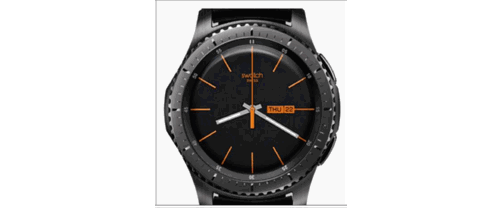A recent decision of the High Court of Justice of England & Wales has helped clarify the law governing registered trade mark infringement by App store operators.
In the case in question (Montres Breguet SA & Ors v Samsung Electronics Co. Ltd & Anor [2022] EWHC 1127 (Ch) (20 May 2022), Samsung were found to have infringed a significant number of registered trade marks owned by the Swatch group of companies.
Whilst the decision depended on the particular facts as determined by the judge, the case gives some useful guidance to determine when an App store operator might be found liable for infringement in relation to apps created and sold by independent 3rd party app designers from an App store.
In summary, the case related to digital watch faces (watch face applications, or “apps”) that members of the public could download to Samsung’s smartwatches from the Samsung Galaxy App store (the “SGA store”).
The watch face apps in question were advertised in the SGA store using signs that were either identical or similar to those owned by the Swatch group of companies (e.g. “Swatch Orange Black WF”) and also the digital watch faces bore signs that were either identical or similar to those owned by the Swatch group of companies. For example (in this case the trade mark “Swatch”):

The Swatch group of companies claimed that between October 2015 and February 2019 a total of 23 of their registered trade marks were infringed by 30 watch face apps being made available in the SGA store, and that those apps were admitted by Samsung to have been downloaded around 160,000 times in the UK and EU. Although each of the apps was developed by a third party (the “app developers”), Swatch maintained that Samsung was intimately involved in, and controlled, the whole process by which the apps were made available, and thus Samsung was liable as a primary tortfeasor in committing registered trade mark infringement.
Samsung denied liability on various grounds, the most significant ones being that it claimed it had not ‘used’ the trade marks and, further, it relied on Article 14 of the e-Commerce Directive. It asserted that all it had done was to provide a vehicle, in the form of the SGA store, through which independent 3rd party app developers could offer and sell their watch face apps to the public.
The Court held that Samsung had infringed a significant number of registered trade marks owned by the Swatch group of companies.
When considering Samsung’s conduct as a whole, it had ‘used’ the trade marks. This was because, inter alia:
Moreover, Samsung had no defence under Article 14 of the e-Commerce Directive. Samsung reviewed all 3rd party designed watch face apps for both functionality and content before they were made available in the SGA store. The Court held that the content review process would have resulted in the reviewer, and through it Samsung, becoming aware of the app name and the appearance of the watch face and thus would have alerted a diligent economic operator to the infringement. The fact that Samsung had in place notice and takedown procedures, which brand owners could use to notify Samsung of infringements, did not itself provide a defence.
The case highlights the difference between an online marketplace, that merely allows 3rd parties to advertise and sell their own goods, but does not play an active role of such a kind as to give it knowledge of, or control over, the way in which the goods are advertised and sold (i.e. the operator of the online marketplace takes a neutral position between the 3rd party seller and potential buyers of the goods), and an App store where the goods being advertised and sold are 3rd party developed apps that relate to goods sold by the operator of the App store, and which apps are reviewed by the App store operator before they are made available for download in the App store. The former is covered by the Article 14 e-Commerce defence. The latter is not.
It is anticipated that this case may go on appeal to the Court of Appeal, so please ‘watch this space’ (pardon the pun) for future updates.
For more information on this article, please contact Carl Steele.